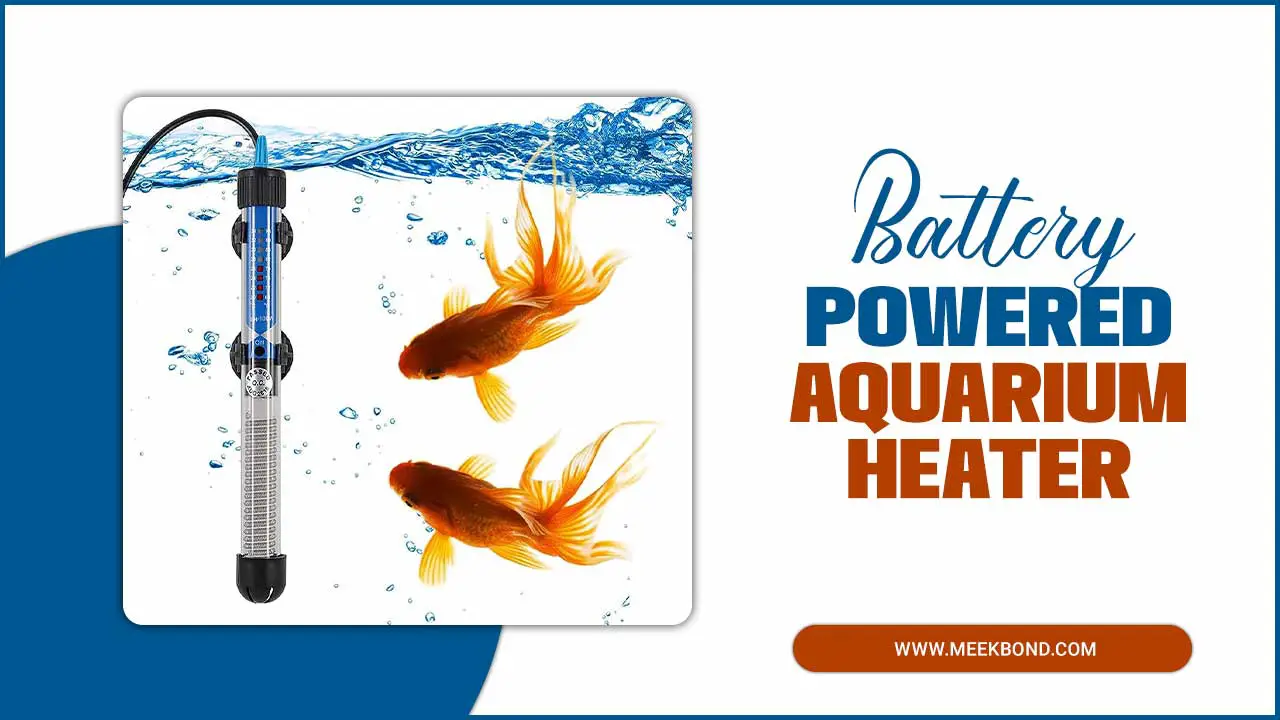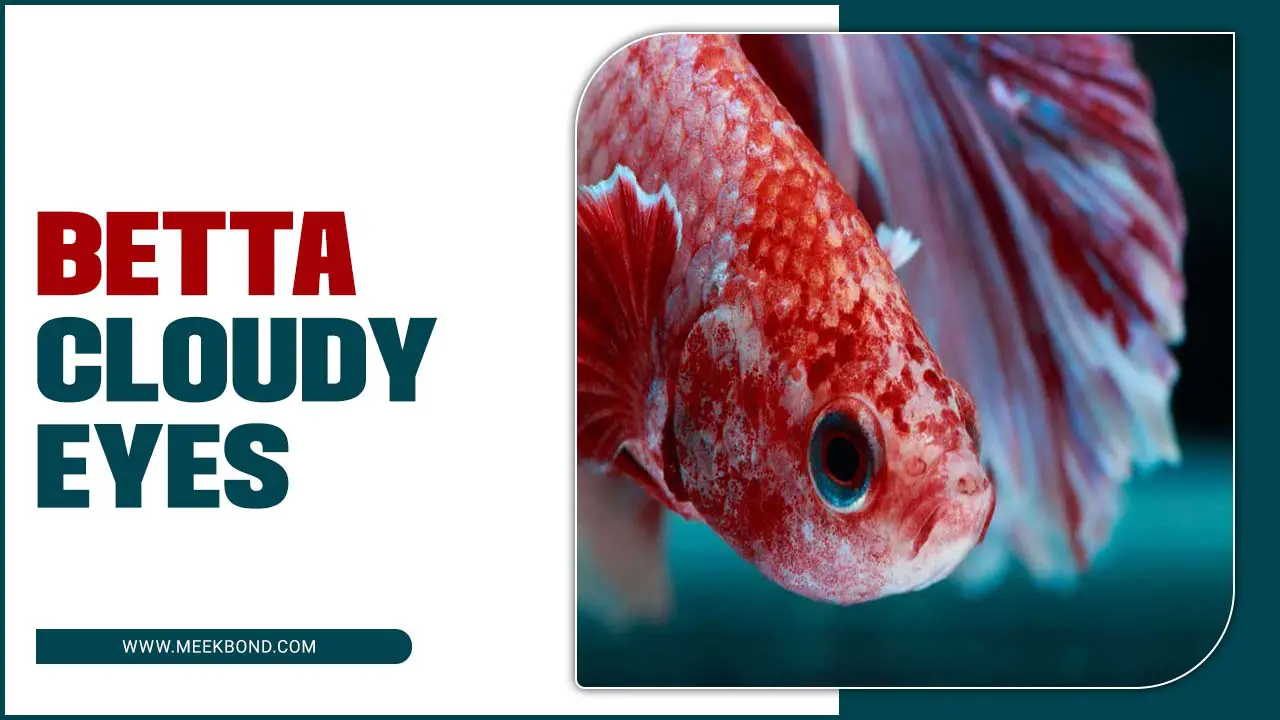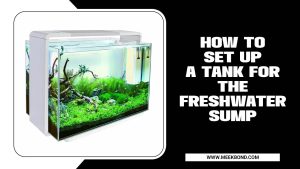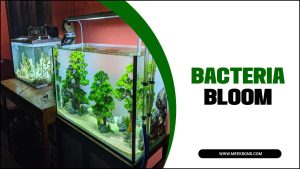Blue light is more intense than red light, and it is, therefore, speculated that blue wavelengths may increase photosynthesis in some organisms, leading to more rapid growth. Algae are an unwanted water pollutant.
It can ruin the look of our swimming pools and look bad in our ponds. Algae require light to photosynthesize and grow; blue light is particularly effective at promoting their growth. This is why aquariums and fish tanks often use blue lighting to enhance the appearance of plants and coral. It also damages the environment because it consumes nutrients plants need to grow. Here’s what you need to know about does blue light cause algae growth?
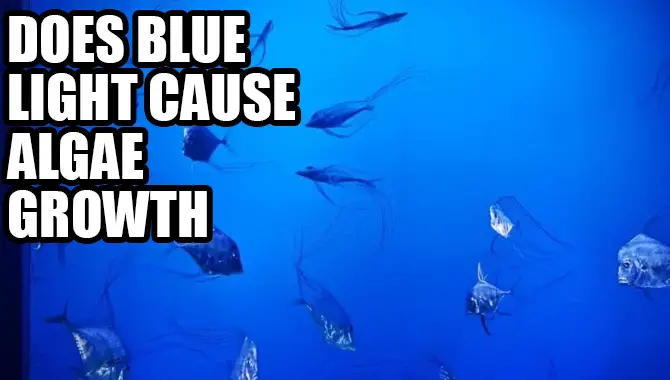
Does Blue Light Cause Algae Growth? Answered
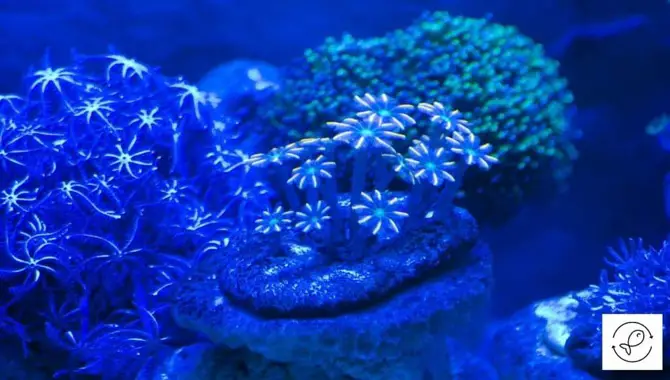
The question of whether blue light causes algae growth is one that has been asked by many people. The answer, however, is not a simple one. While it is true that blue light can stimulate the growth of some types of algae, it is not the only factor that contributes to their growth. The amount of nutrients available, the temperature of the water, and the level of dissolved oxygen are all important factors that can affect the growth of algae.
Studies have shown that blue light can promote the growth of certain types of algae, such as diatoms and cyanobacteria, which are commonly found in freshwater and marine environments.
However, the effect of blue light on algae growth is not always positive. In fact, excessive exposure to blue light can cause damage to the algae, leading to reduced growth and even death.
The blue or violet LED solution can also help minimize algae growth if there is enough water flow around your pond’s filter during the daytime so that pollen particles are carried into air bubbles by vehicles along a street, bottom turbulence due to pond filtration systems, and outdoor plants will carry any unwanted pollutants right back to their parent plants.
However, if you have an algae problem in your pond or tank, there are some things you need to know about its cause, and you can see my articles on algae here for more information.
- Violet = A wavelength of 380–450 nanometers, visible light range
- Blue = A wavelength of 450-495 nanometers, not composed of green or red subspecies
- Red = A wavelength of 630-700 nanometers, not composed of green or blue subspecies
- Green = 430 to 480 nanometers
Do LED Lights Cause Algae Growth In Aquariums?

There is a hypothesis that blue and violet light wavelengths, in particular, may promote photosynthesis, making this alga more aggressive than other less productive forms. We tested for this effect by measuring the metabolism index (MI) to determine photosynthesis activity in treated algae cultures exposed analytically to red or blue LEDs over 5 days.
No significant differences were found in algal cells under natural sunlight conditions for flowering time between red and blue light treatments, indicating that higher photosynthesis activity may not be the only factor influencing algal growth. Lights work by using electrical energy to create light photons that any nearby plant cells absorb.
This process does not affect algae per se unless they are present in an aquarium or pond with enough water flow for the surrounding medium to carry dust particles into air bubbles originating from filtration systems or filter canisters, vehicles moving along a street, and outdoor plants which transfer their pollen into the water.
What Causes Algae Growth?
Various causes can lead to a build-up in algal populations, including light intensity and nutrients. In tanks, changes in water chemistry can also trigger algae growth from a lack of oxygen at the bottom of your aquarium tank.
A clogged filter will create low oxygen levels causing anaerobic conditions that allow harmful bacteria or cyanobacteria (blue-green algae) to thrive. If you’ve installed new lights on your tank but still produce an algae problem over time, scrub the inside of your filter with a gravel vacuum and replace it.
How Long Does It Take For A Plant To Get Used To The New Light?
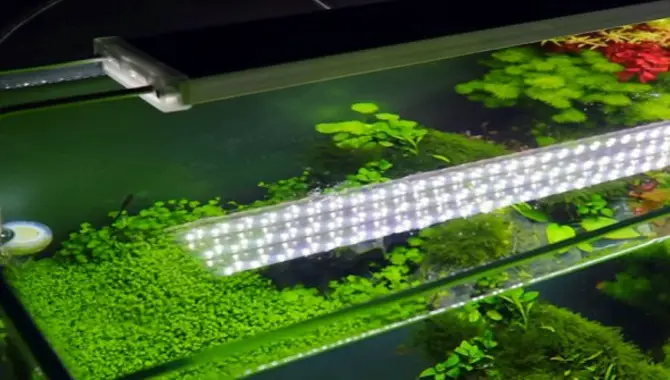
The length of time it takes for a plant to adjust to new light largely depends on the plant species and the intensity of the light provided. Generally, most plants need at least a week to adjust to new light conditions, but this can vary from a few days to a few weeks.
It’s important to remember that sudden changes in light intensity or duration can shock the plant and cause damage. Therefore, it’s recommended to gradually increase the amount of light over several days or weeks until the plant is acclimated.
Some plants may also require a period of time to adjust to a new type of light spectrum, such as from fluorescent to LED lighting. During the adjustment period, it’s crucial to monitor the plant’s growth and health to ensure it’s not experiencing any negative effects.
How to Give Plants Proper Water Chemistry Adjust Your Tank Environment
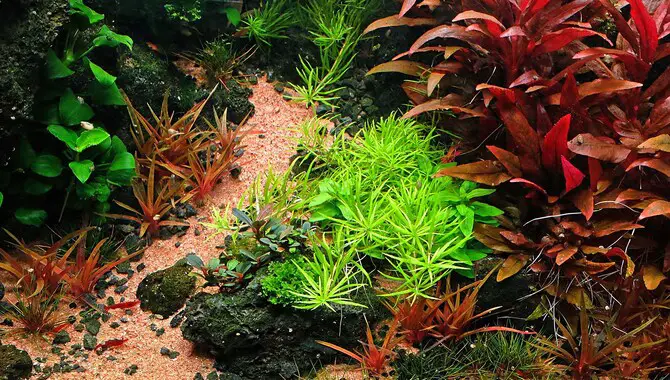
Proper water chemistry is essential for keeping your aquarium plants healthy and thriving. Adjusting your tank environment to create the optimal water conditions for your plants can be done in a few simple steps. First, test the pH and hardness levels of your water using a reliable aquarium test kit.
This will give you an idea of the current state of your water chemistry. If necessary, make adjustments by adding pH buffers or water conditioners to achieve the ideal pH level for your plants. Additionally, consider the temperature and lighting conditions in your tank, as these factors can also impact plant growth. Providing a stable and suitable environment for your plants will promote their overall health and vitality, ensuring they have the best chance of flourishing in your aquarium.
How Long Should Aquarium Lights Be Kept On To Prevent Algae?
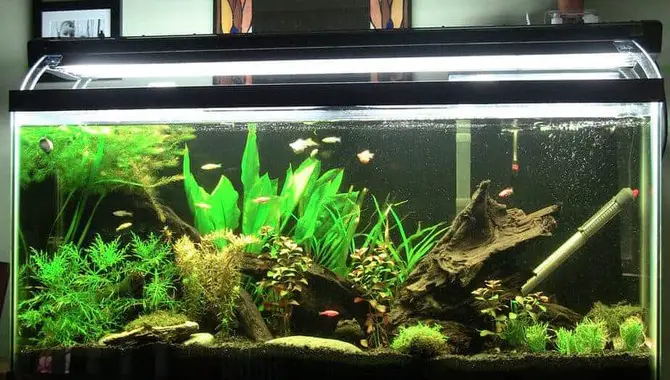
Aquariums are the perfect place to house fish, but keeping them healthy and algae-free can be challenging. One of the primary causes of algae growth in aquariums is blue light from the aquarium lights. This light harms fish and can cause them to develop algae problems. To keep your fish healthy and algae-free, it’s important to keep an eye out for any signs of algae growth, take appropriate action, and keep your aquarium lights off at night or when you’re not using them.
The time your aquarium lights should keep on depends on the bulb type and brightness. For example, halogen bulbs should keep on for 8 hours a day, while fluorescent bulbs should keep on for 12 hours a day. Remember that blue light from aquarium lights harms fish and should be avoided whenever possible.
Do Led Aquarium Lights Cause Algae?
Algae growth is a common problem in tanks and aquariums using LED lighting as their primary light source. This is because blue light from LEDs can damage algae species, leading to increased growth. Choosing a light with a less damaging wavelength range is more important than blue light to avoid this issue.
Also, check with your pet shop or fish dealer about the best tank LEDs and see if they offer special filters to reduce blue light emissions. If you’re still experiencing algae growth problems, switching to another light source might be a good idea.
Why Does An Aquarium Have Blue Light?
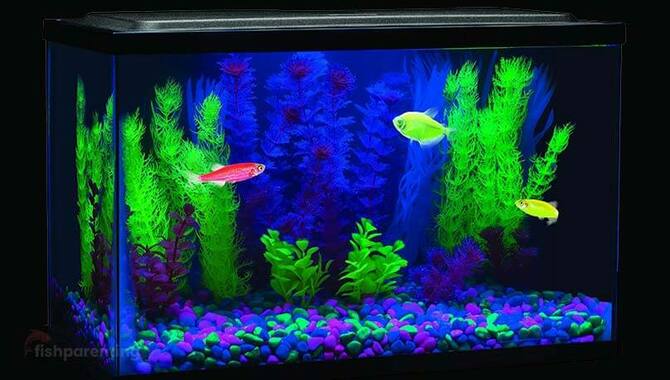
Having an aquarium is a great way to get closer to nature, but keeping algae growth at bay cannot be easy. One of the main culprits is blue light, which is responsible for photosynthesis. This helps aquatic plants grow, but blue light also causes algae to proliferate.
Fortunately, you can do a few things to reduce the amount of blue light entering your tank. For example, use filters and glasses that filter out blue light. Keep a healthy balance of light in your aquarium by using light fixtures emitting different colours.
Is Blue Light Good For Aquarium Plants?
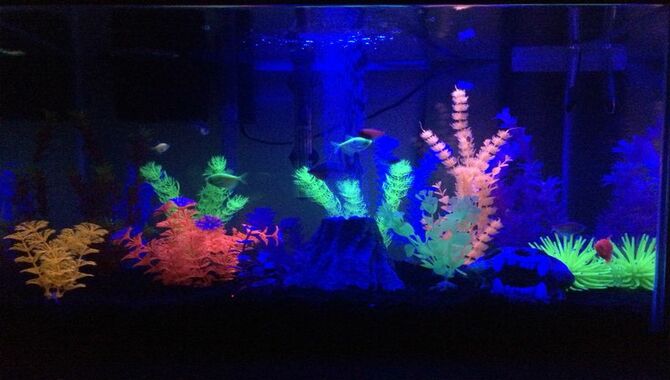
Blue light can be beneficial for aquarium plants, but it is important to understand its effects and use it appropriately. Blue light has a shorter wavelength and higher energy than other colors of light, which can promote photosynthesis in plants. It can also enhance the colors of certain types of plants, making them more vibrant and visually appealing.
However, it is important to note that too much blue light can be harmful to plants, as it can cause excessive growth or even damage the plant’s cells. It is recommended to provide a balanced lighting spectrum for aquarium plants by using a combination of blue and white lights, or by using full-spectrum LED lights that mimic natural sunlight.
Conclusion
After exploring the topic, we can conclude that blue light contributes to algae growth. While this may benefit some aquatic environments, it can also be harmful and disruptive in others. Individuals and organizations need to understand the potential effects of blue light on algae growth and take appropriate measures to manage it.
Doing so can help maintain healthy aquatic ecosystems and prevent negative impacts on wildlife and human health. We hope now you can understand about does blue light cause algae growth?
Frequently Asked Questions
Do I Need Algae Control Chemicals Or Additives?
Yes, if you have an unwanted algae problem in your fish tanks. If your algae problem is minor and does not affect your fish, you do not need to add anything besides what you use.
What Does It Mean For Blue Light Bulbs To “Effect An Algae Bloom”?
Blue light generated by a bulb is a stimulus that the plants use during their day/night cycle oscillation. The plant’s leaves need these cycles to operate properly, so when there is no red light source for the plant, algae will start to grow and create problems in the tank.
What Is A Good Bulb For Keeping Fish Healthy?
Many fish owners have been looking for a good bulb to keep their fish healthy. A good bulb provides sufficient light and is easy to use.
There are many bulbs that you can choose from, some of which are:
LED
– LEDs provide a better light spectrum than incandescent bulbs with less heat and energy consumption.
Fluorescent
– Fluorescent lights have no heat and will not overheat your tank or home. They also provide different light, light colours depending on what part of the spectrum they emit, in which plants grow faster under certain colours such as red, blue, green, etc.
What Are The Effects Of Blue Light On Aquatic Ecosystems?
Algae growth is one of blue light’s most harmful effects on aquatic ecosystems. Alga is a plant-like organism that can take over an ecosystem and negatively affect plant and animal life. Blue light exposure can even cause the extinction of some fish species. Fortunately, there are ways to reduce or avoid exposure to blue light when travelling. One way to do this is to use a red filter on your phone or sunglasses when reading or viewing pictures in blue light.
How Can Blue Light Be Damaging To My Eyes?
When using electronic devices, be aware of the blue light from them. Blue light exposure can impact the eye’s retina and cause eyestrain, blurry vision, and headaches. It can disrupt our circadian rhythm, making sleeping hard at night. Blue light exposure can even suppress our natural production of melatonin.

Aquarium passion is all about connecting with the aquatic life and providing education to the public on the importance of these creatures. We showcase a wide variety of marine life through our exhibits as well as working with schools to provide unique learning opportunities for students of all ages.



